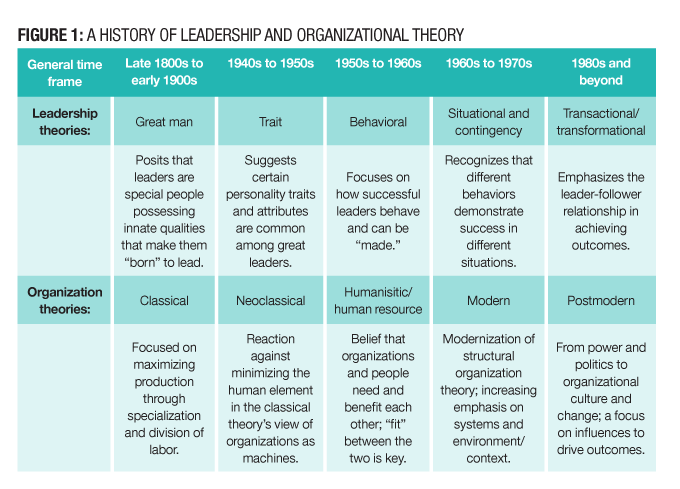Countless valuable works contribute to our understanding of leadership and organizational effectiveness. There are well in excess of 100,000 books on leadership alone. Factor in those on organization development and change, and your reading list expands exponentially. This raises some questions for learning leaders: Is it possible to synthesize and simplify the myriad leadership models into a single, understandable leadership system? If such a system is possible, how can one use it to consistently develop effective leaders and organizations?
Rather than create yet another nuanced approach, what if we could integrate the two huge and historically distinct fields, distill them to the most essential elements, and use those elements to offer one overarching framework for leadership and organizational excellence? In short, how might we simplify success and make it systematically achievable?
Achieving simplicity by recognizing and extracting only what’s essential requires starting with a broad view. Figure 1 is a parsimonious look at more than 100 years of theory for the two disciplines. From here, we can focus on understanding the essential elements and build a solid, simple framework for leader and organization success.

From Theory to Practice
The two traditionally distinct domains have many parallels.
Both fields are interested in understanding and improving performance — one targeting individual leader effectiveness and the other aimed at overall organizational effectiveness. Both have led to distinct measures and methods that, when boiled down, address similar content at different levels. But two key themes stand out as particularly valuable.
First, both domains began with a strong task or process focus, later recognizing the importance of the human factor and ultimately arriving at a more balanced perspective. At the organization level, this is seen in the transition from classical to neoclassical and humanistic theories. At the leader level, the distinction between task and relationship factors was introduced by the behavioral theorists. This shift occurred at approximately the same time, from the 1950s to 1960s, in both domains.
Second, both had an early emphasis “inside” the leader or organization, later moving to external impacts, including environmental influences and creating change. In the leader domain, the inner qualities and attributes of the individual (great man and trait theories) expanded to behaviors in various environments (behavioral and contingency theories) and shifted from maintaining or incrementally improving the status quo to influencing transformation (transactional/transformational theory). Similarly, modern and post-modern theory brought attention to the organization as an open system within a changing environment, increased emphasis on strategy, and emphasized organizational culture and culture change to support new levels of performance.
These themes represent the two critical dimensions for creating a robust yet simple framework for both leader and organization development. The first dimension is task and relationship; the second is running versus changing the business. Figure 2 shows a resulting two-by-two matrix and the five essential elements that are created at the intersection of these two dimensions.

In the two-by-two framework, each of the four quadrants show relevant leadership skills and organizational systems to be tackled. The essential core contains key factors that make the model uniquely relevant to each leader and organization.
Numbers represent process sequence. Collectively, the core-plus-four framework represents a unified leadership system designed to transform individual and organizational results.
Essential Core
The center of the core-plus-four leadership system represents the most foundational factors and should always be the starting point. It’s ground zero and is numbered as such. This is where the organization’s mission, vision, values, core competencies, strategic challenges and advantages are defined, refined and constantly reviewed relative to decisions and actions in all the other areas.
The essential core also must include the leadership team’s definition of success and how it will be measured. This is often done using key performance indicators addressing financial considerations, quality, customer service/engagement, workforce and other core measures. An effective measurement system is necessary to select, collect, analyze and report results to inform leaders and guide action.
Without these key factors in place, the leader and organization lack focus and cannot adequately develop or refine the skills and systems needed for sustainable high performance and competitive advantage. When well defined, a strong core anchors and aligns all the other elements and creates greater differentiation between excellent and average performers.
Establish Direction
At the intersection of change the business and task, you’ll find establish direction. As a critical responsibility of leaders, establishing a desirable and competitive strategic direction requires a solid understanding of the business, new ways of thinking and quality decision-making. These skills, when supported by an organizational strategic planning system, ultimately lead to the development of strategic objectives and related action plans to advance the new direction. The core factors of vision/values, strategic challenges/advantages and meaningful measures serve to inform the strategic plan and its ongoing refinement to ensure intended outcomes are achieved and the organization is sustainable.
Both the numbering system and solid arrows in Figure 2 imply a strong bidirectional relationship between establish direction and engage. Depending on the culture and core of the organization, its leaders may initially lead off with either; however, a disciplined seesaw approach between the two will ensure the needed input and alignment of each are achieved.
Engage
Following the diagonal arrow to engage, we’re now at the intersection of run the business and relationship. Driving toward a task (including the strategic direction) without attending to people can undermine your efforts and outcomes. Effective leaders use their skills to build collaborative relationships, attract and leverage top talent, and maintain a keen awareness of their own attitudes, behaviors and impact. This includes but is not limited to role-modeling the company’s core values and building trust internally and externally.
At the organization level, parallel systems associated with relationship management include governance and societal responsibility, customer/stakeholder focus, workforce focus and supplier-partner-collaborator interactions. When the leadership skills and organizational systems come together, there is effective communication and engagement with all essential groups — including balancing the various needs and expectations of each — aligned around core requirements.
Returning to sequence, and the previous seesaw-by-design discussion with establish direction, a key portion of engage is focused on acquiring and retaining customers, workforce and other stakeholders through relationship management. This includes defining your key customer/stakeholder groups, obtaining information to identify their needs or requirements, and determining their satisfaction and engagement. As noted, this can either be the starting place for, or serve as key input to, the strategic planning system associated with establishing direction.
Execute
Moving to the left, retaining a run the business focus while shifting from relationship back to task, is the execute quadrant. Even the best-designed plans, with clear direction established and key stakeholders engaged, are of little value if not well-implemented. Highly effective leaders get results by demonstrating action and accountability, aligning and directing work, and eliminating barriers. Corresponding organizational systems include service/product and process management, data and information management, and performance management. When these leadership skills and organizational systems are in place and aligned, leaders create an environment for success and a focus on action to achieve the company’s core mission and KPIs.
Related to sequence, strategic plans and operational processes are generally first developed, executed and then measured for learning and improvement to occur. Reviewing actual performance relative to initial plan and intended outcomes (in addition to environmental influences such as competitor performance) informs the nature and direction of change. The organization can then do more of what worked and modify what didn’t. The needed changes, addressed in the evolve quadrant, may be incremental or transformational.
Evolve
Completing the circuit in the upper right quadrant, we begin and end with a strategic change the business focus, now with a relationship orientation. Whereas engage addressed understanding customer/stakeholder needs and expectations, as well as building collaborative and mutually beneficial relationships, evolve inspires and transforms. Here, the leader’s skills move from engaging to influencing others toward a shared vision, challenging the status quo and leading change, as well as developing others while demonstrating your own adaptability and continuous development.
At an organization level, evolving requires effective systems for workforce and leader development, collecting and transferring organizational knowledge, performance improvement and innovation. When fully integrated, these skills and systems collectively and directly target advancement of the organization’s essential core, maximizing long-term competitiveness and minimizing random acts of improvement.
Although evolve appears last in the leadership system flow, the open arrows and adjoining boxes indicate there is always a sense of fluidity between the elements. While evolution and revolution (incremental improvement and transformational innovation) often follow execution as a result of intentional learning, revolutionary change can also precipitate it. This may especially be the case in high-tech organizations or high-disruption industries. For example, strategic direction should be based not only on known needs of your target customers (via engage) but also on potential solutions to problems your customers may not even be aware of yet (evolve).
Treat the arrows as a general guide while recognizing the fluid nature of the five essential elements. Address all elements in the sequence that works best for your organization.
Putting It in Place
To move the model from paper to practice in your organization, begin with the following steps:
- Assess and prioritize the practices. Assess your current essential core, leadership skills and organizational systems to discover your unique strengths (gifts) and opportunities for improvement (gaps). Identify and prioritize the key gifts and gaps most directly influencing your present and desired performance. Engage relevant individuals and groups in this process.
- Develop a customer plan. Every leader and organization will look different based on the assessment and resulting set of priorities. It’s therefore important to create a targeted development plan focused on what’s needed and when to advance essential gifts and address key gaps. Use this plan to establish the direction for accelerating your leadership and organizational success.
- Follow the plan and reassess. When the first two steps have been done well, you will see clear value in the development plan. You will also be able to see this is not add-on work but rather the new normal for how work gets done more effectively. Now take disciplined action to implement your prioritized core, skills and systems, measure their performance and modify as needed (execute and evolve).
These steps follow the overall leadership system and, as a result, this becomes your first cycle. Think of the leadership system as an annual cadence. Through subsequent cycles, the organization systematically addresses how it both runs and changes the business while balancing tasks and relationships. As an added bonus, routinely covering the four essential elements protects you from the most common performance-busters.
Putting It in Perspective
When working with clients, I see three common reasons why their performance is not where they want it to be: They are often doing the wrong things, doing things the wrong way, or doing things the same way. The core-plus-four model addresses each of these performance-busters.
By effectively defining and aligning an organization’s core and established direction in a way that engages key customers and stakeholders, your leaders create clarity around the right things and can make decisions and act accordingly.
The core-plus-four leadership system can streamline your path to high performance. It provides your leaders a single, integrated approach built around the leadership skills and organizational systems necessary for success.
Cynthia St. John is founder of Chiefology and former vice president and chief learning officer of Texas Health Resources. She can be reached at editor@CLOmedia.com.















